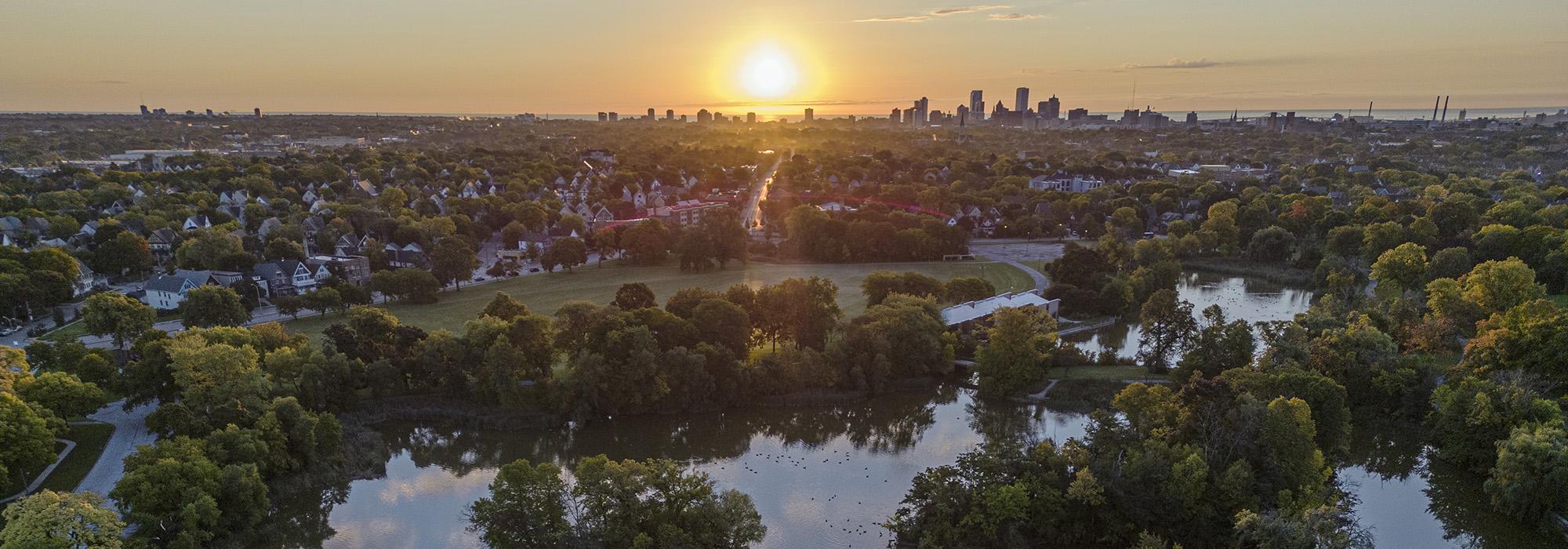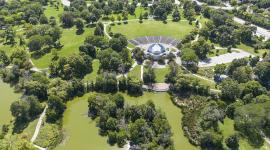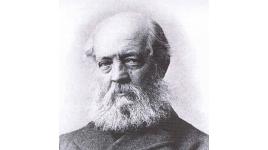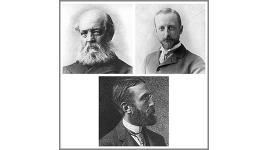A New Threat to Milwaukee's Olmsted-designed Washington Park
Milwaukee’s Washington Park, one of the city’s three legacy parks designed by Frederick Law Olmsted, Sr. in the early 1890s, and featured in The Cultural Landscape Foundation’s (TCLF) Landslide 2022: The Olmsted Design Legacy report, is facing yet another threat to its historic integrity. A proposal is being publicly floated to turn a significant portion of the 128.5-acre West Side park into a “bike park,” including use for mountain biking and races. The concept includes installing a “bike skills track” and a 1.26-mile “bike loop” around the park’s perimeter.
An open-to-the-public “brainstorm” meeting was hosted in November 2022 by Wheel & Sprocket, a Milwaukee-based bike retailer with numerous stores. The concept is outlined here.
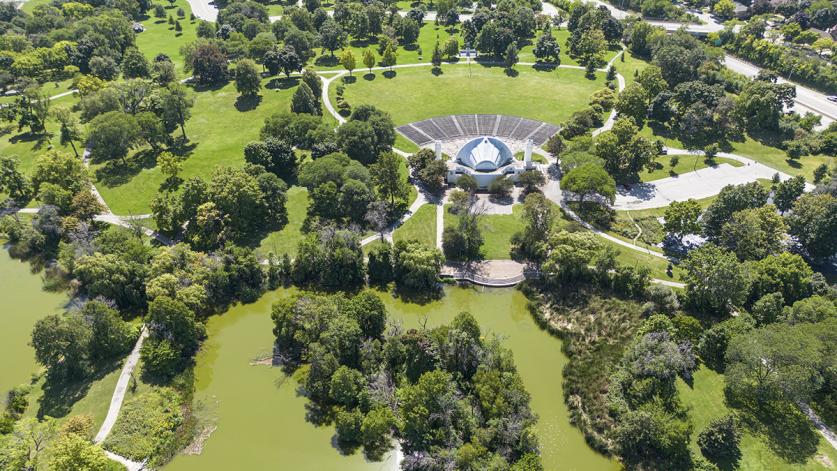
Dave Boucher, a 26-year neighbor of Washington Park and longtime advocate for biking and responsible park stewardship, thinks that any discussion of a bike park there is “way too premature.” He has worked for more than a decade on behalf of creating a much-needed recreational trail along the nearby “30th Street Corridor.” That project is currently being studied by myriad public agencies and the non-profit Rails-to-Trails Conservancy.
Boucher supports the idea of a dedicated bike park somewhere and hopes that those pursuing the concept will analyze potential spaces that won’t jeopardize access, safety, or a historic landscape that offers many opportunities for enjoyment. “My wife and I regularly walk our dog and do bird watching throughout Washington Park. Having to contend with bikers speeding around the park would definitely impact many people’s experiences of this park,” he said. “Throwing more stuff in the park to serve an underserved community that has asked repeatedly for folks to follow the goals set forth in the park’s 2000 revitalization plan is a little like using a screwdriver when a pipe wrench is called for. And ultimately the community gets blamed for not appreciating what’s been provided,” he said. Boucher was one of the neighbors appointed to the task force to develop that plan.
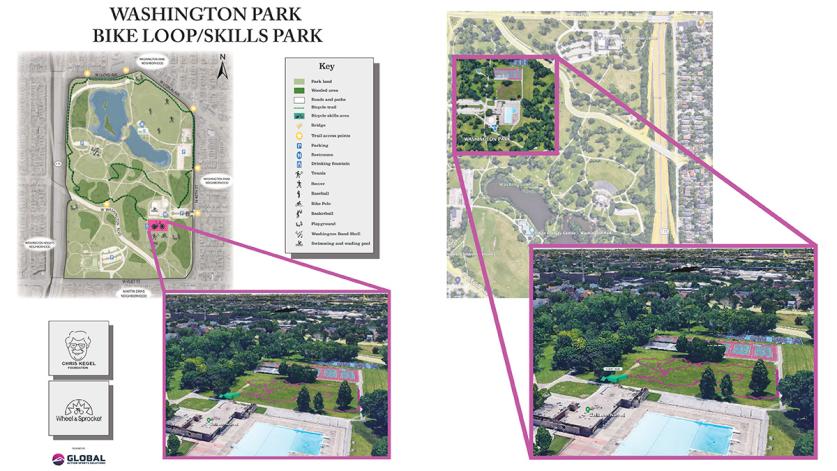
Wherever a bike park is created, it should be connected to a bigger bicycling network. It cannot just be an isolated entity where people need to drive in with their bikes, said Boucher.
Washington Park is currently home to three separate playgrounds, basketball courts, swimming and wading pools, bike-polo courts, soccer fields, fishing and boating within the lagoon, reservable picnic areas, summer camps for young people and other nature programming, a popular summer community concert series and other amenities. A large senior center is also located within the park.
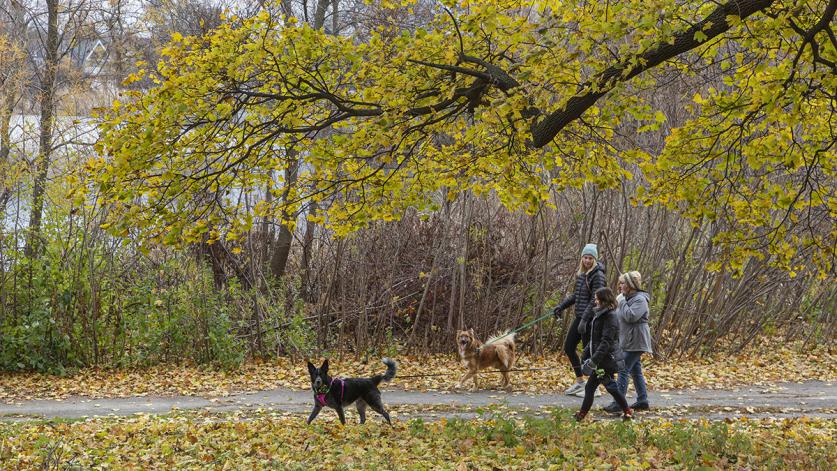
Washington Park already poses risks for pedestrians and cyclists trying to easily and safely gain access to and freely move around the park. “You cannot even push a toddler on a path without running into a lot of potholes. So, the park really needs a holistic strategy for paths and trails,” said Boucher. “You can’t just drop in a soft trail for a specific age group.”
Boucher and others have long advocated for addressing other important challenges and opportunities within Washington Park, especially the restoration of the long-neglected lagoon, which was created as part of Olmsted’s original plan. “Existing walking trails need to be repaired and expanded so that the park is welcoming, safe, and able to be fully enjoyed as it was intended—as a public park serving everyone. I’ve worked with many children and their parents as the youngsters learned to ride a bike. You just need a good flat surface—whether paved or turfgrass.”
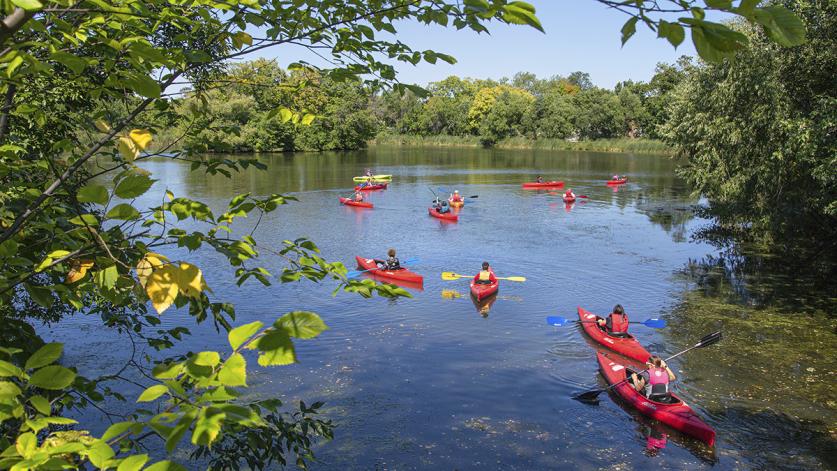
The Christ Kegel Foundation, affiliated with Wheel & Sprocket, described the project’s proposed project’s mission: “To create a bike park for all ages, abilities, and ambitions of bike riders in a centralized neighborhood in Milwaukee.” Project promoters anticipate that “25-34% of Washington Heights population with expandable (sic) income will likely use the bike loop and skills park.” The average income for residents of the Washington Heights neighborhood is roughly three times as that in other neighborhoods surrounding the park, as described in the proposal. Other users are expected to drive to the site from other locations, with parking lots in the park considered advantageous for having a bike park there.
Washington Park, designed predominantly for passive use, has many of the same qualities and passages of scenery as New York City’s Central Park. Lane Addonizio, Vice President of Planning for the Central Park Conservancy, says of that park, “bikes are not allowed on pedestrian paths (paved) or trails (soft surface).”
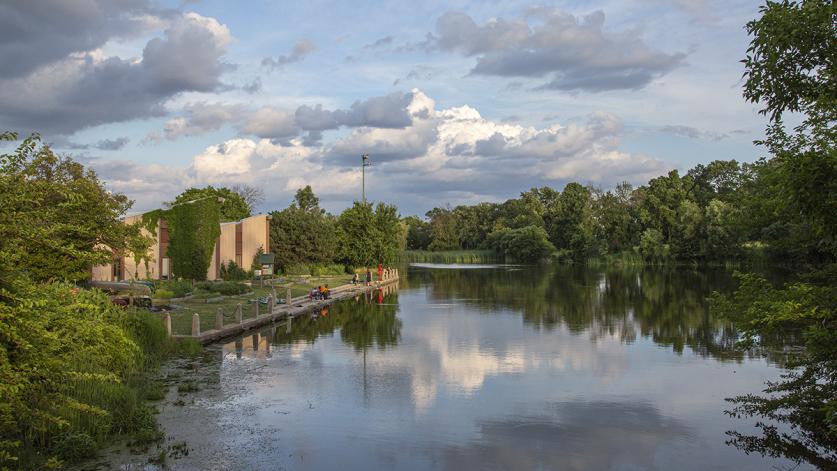
Much can be learned from other cities where managing change in historic urban parks is carefully calibrated so that historic parks are not adversely impacted by modern uses. In Minneapolis, for example, the 1883 park system by H.W. S. Cleveland is recognized today as one of the most significant in the country. Twin Cities historian, Richard Arey, author of Twin Cities Bicycling, (1999), notes, “Most mountain bike trails are located in larger park reserves like Theodore Wirth in Minneapolis and not traditional parks like Como Park in Saint Paul where virtually every square foot is programmed.”
The Landslide 2022 listing for Washington Park concludes by urging “Milwaukee County officials to engage in a holistic planning process that includes experts in landscape history and historic preservation along with local stakeholders and specialists in ecology and environmental issues.” This is yet another example of how the park and the public would benefit from such a commitment and codification of shared values.



